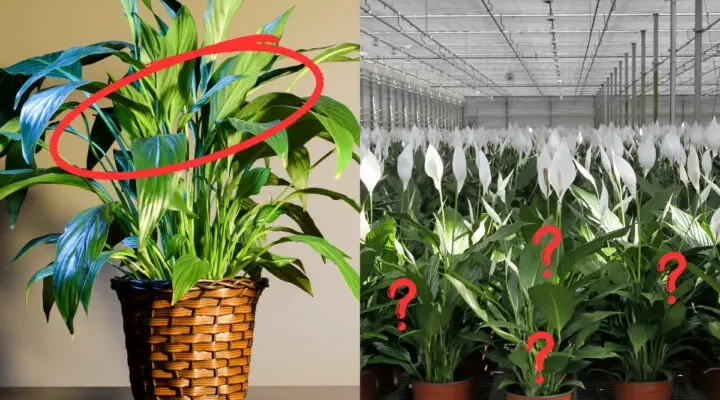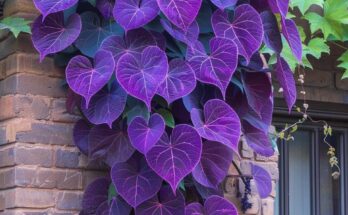Why isn’t my peace lily blooming? It’s the most commonly asked question about this popular beginner’s houseplant. And while Google will throw numerous articles at you with numbered lists suggesting why your plant won’t bloom, few get it right.
You see, they fail to address something plant breeders have known since the 80s about the blooming habits of Spathiphyllum.
If you want to know the real reason your peace lily isn’t blooming, then it will take a bit more reading than “7 Reasons Why Your Peace Lily Won’t Bloom.”
The Peace Lily – a Brief Overview
Spath or Peace lily, Spathiphyllum, is a monocotyledonous flowering plant. Basically, they’re a type of grass that happens to flower. Yup, without the blooms, you’re just growing fancy grass. And if you’re like most houseplant owners, you already have plenty of ‘fancy grass’ in the form of Monstera deliciosa, pothos, spider plants and other plants grown for their foliage.
But we bought our peace lilies for their stunning white blooms.
Those beautiful, elegant, stately, blooms. They aren’t really flowers in the sense that we normally think of flowers.
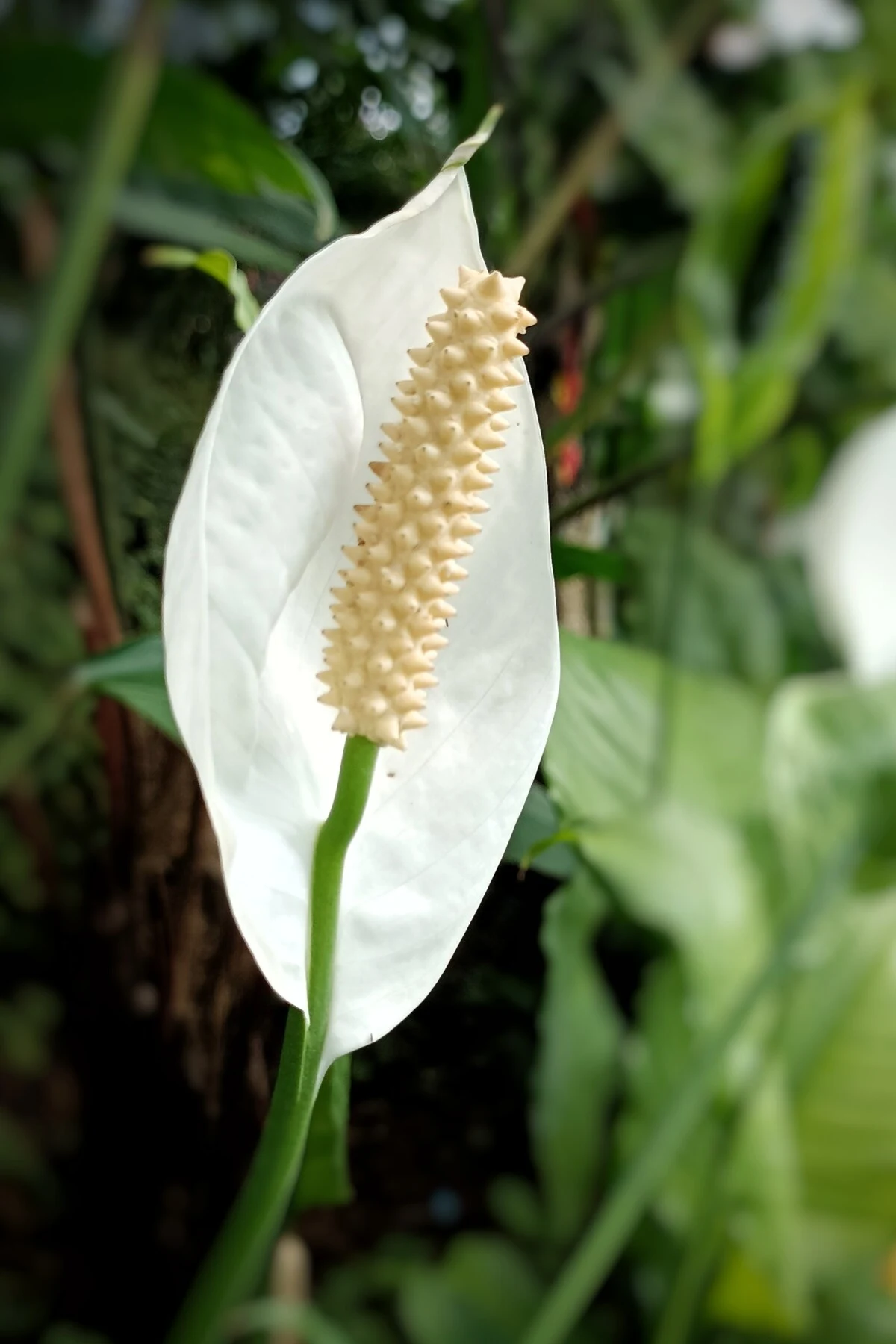
The creamy white ‘petal’ is actually a leaf called a spathe or bract. Bracts are specialized leaves that serve a function usually pertaining to reproduction. For instance, the colorful bracts of this ridiculously popular ‘flower’ attract pollinators.
The spathe of a peace lily surrounds and protects the plant’s reproductive organ, called a spadix. The spadix is usually white, green or yellow. Yup, that knobby little growth is the flower.
Peace lilies are touted as a great beginner-friendly houseplant.
They do well in medium-light situations, as direct sun can easily scorch their leaves. They only need to be watered when the first top inch of the soil is dry, and a balanced NPK fertilizer will help them to thrive.
With the right care, there’s no reason that your potted peace lily won’t last for decades.
Notice, I didn’t say bloom for decades.
A Modern History of Peace Lily Cultivation
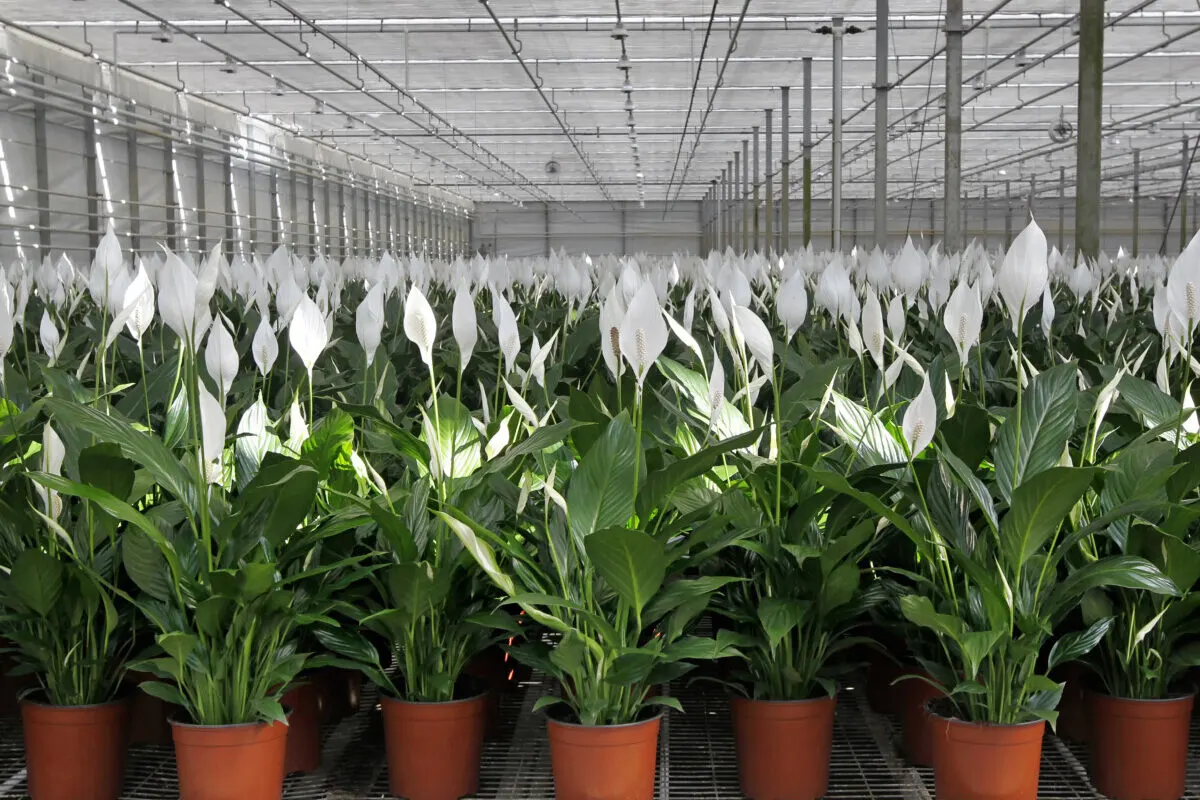
Up until the 1980s, there were only a couple of peace lily cultivars available. Bringing a flowering peace lily to market could only be done once a year. It took growers a year to grow the plants to maturity, ensuring they received the right amount of light. They were kept at proper temperatures and fertilized regularly so the mature plants would bloom in their natural cycle just before being brought to market.
Because of this, peace lilies were marketed as a foliage plant.
“The flowers are okay, but hey, look at those glossy emerald leaves; pretty nice, am I right?”
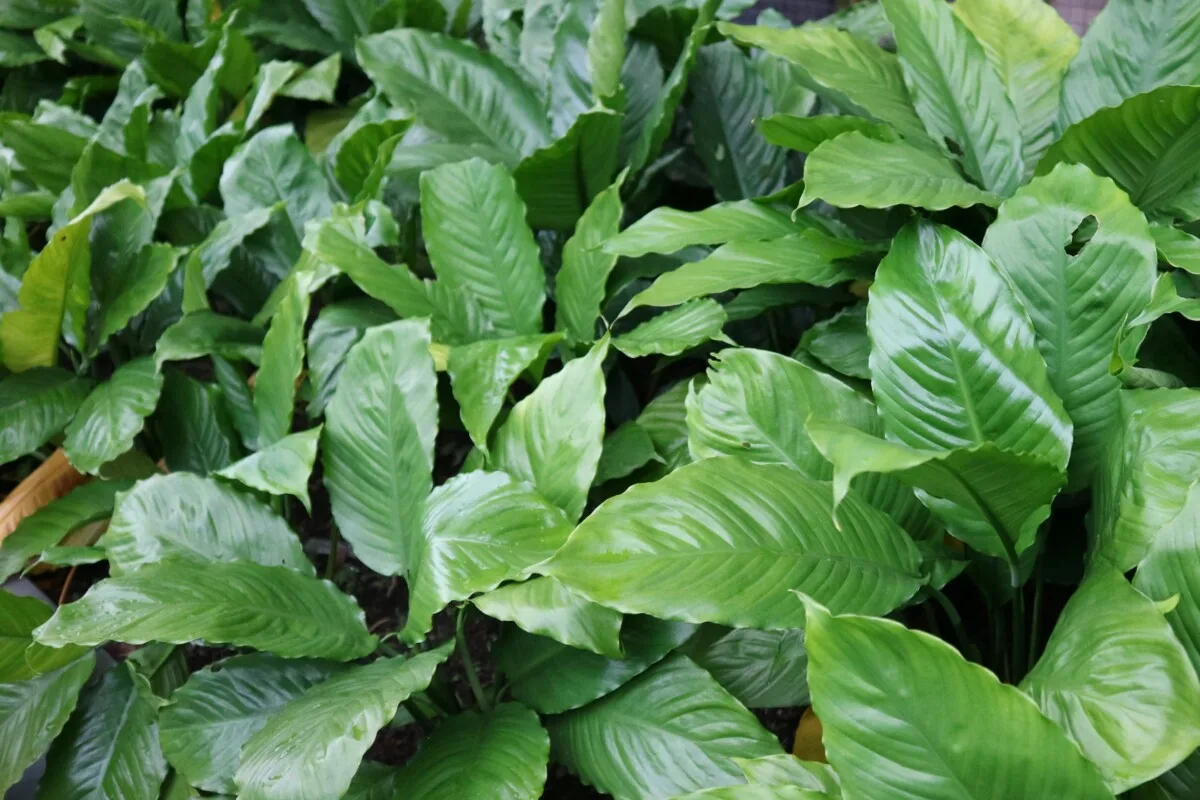
But we fell in love with these plants anyway, and demand for peace lilies grew.
Capitalism did its thing, and breeders began to try to develop new cultivars that would flower constantly. The problem was that to breed new plants, you needed flowers, and they only had flowers during a three- or four-month window each year.
(The wise green thumb will note here that if breeders were struggling, maybe it’s not the plant but our desire for more blooms that’s the issue.)
However, a breakthrough came when it was discovered that applying a plant hormone called gibberellic acid would induce blooming. We could now get peace lilies to bloom on command, well, within two to four months of applying GA, anyway.
Suddenly, growers didn’t have to wait for a plant to reach full maturity for it to bloom.
A little spritz of GA and a much smaller, more immature plant could be forced to flower. This meant they could produce smaller blooming specimens, which are much easier to sell.
Thus, peace lilies began to be marketed as a flowering plant.
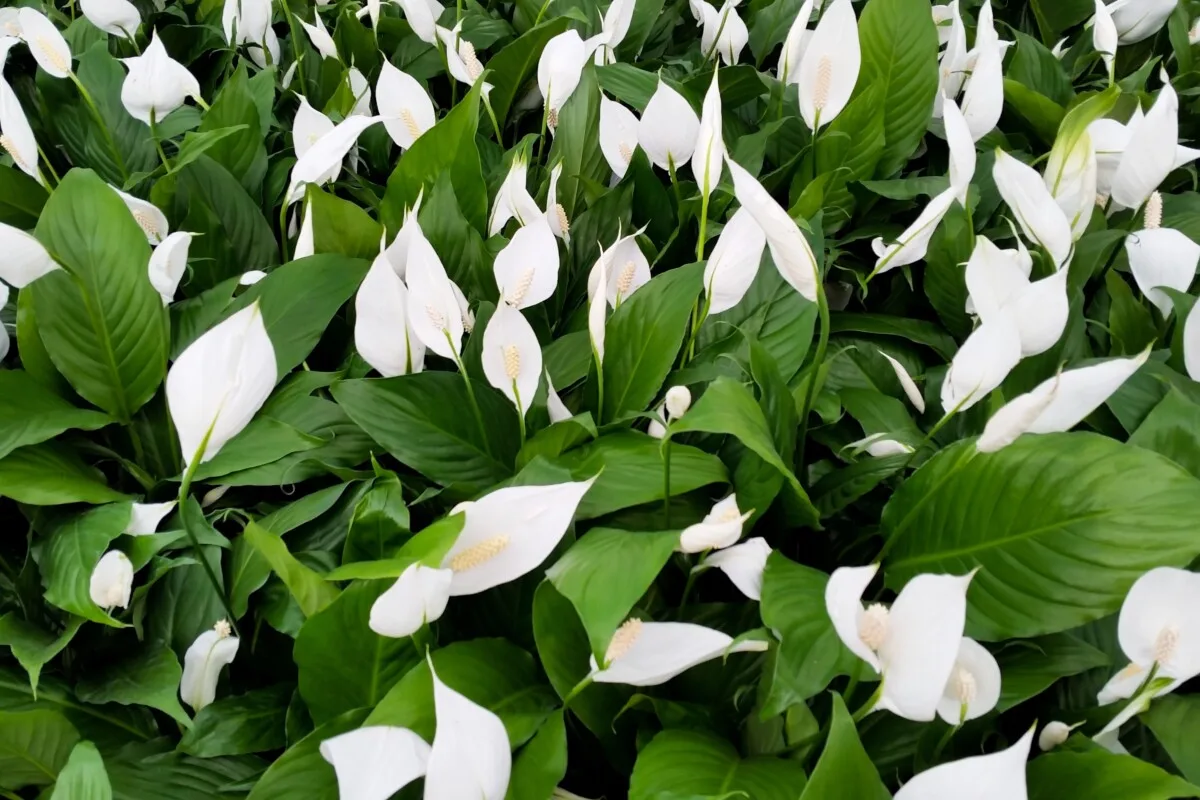
Flowering plants make up a larger market share than foliage plants because flowering plants sell better.
(Hey, wise green thumb, I hope you’re still reading between the lines.)
Of course, gibberellic acid had its drawbacks; sometimes, flowers were malformed, and new leaves of a GA-treated plant were often much narrower than their usual glossy oval shape. Rising chemical costs made using gibberellic acid less cost-effective.
Back to the Drawing Board
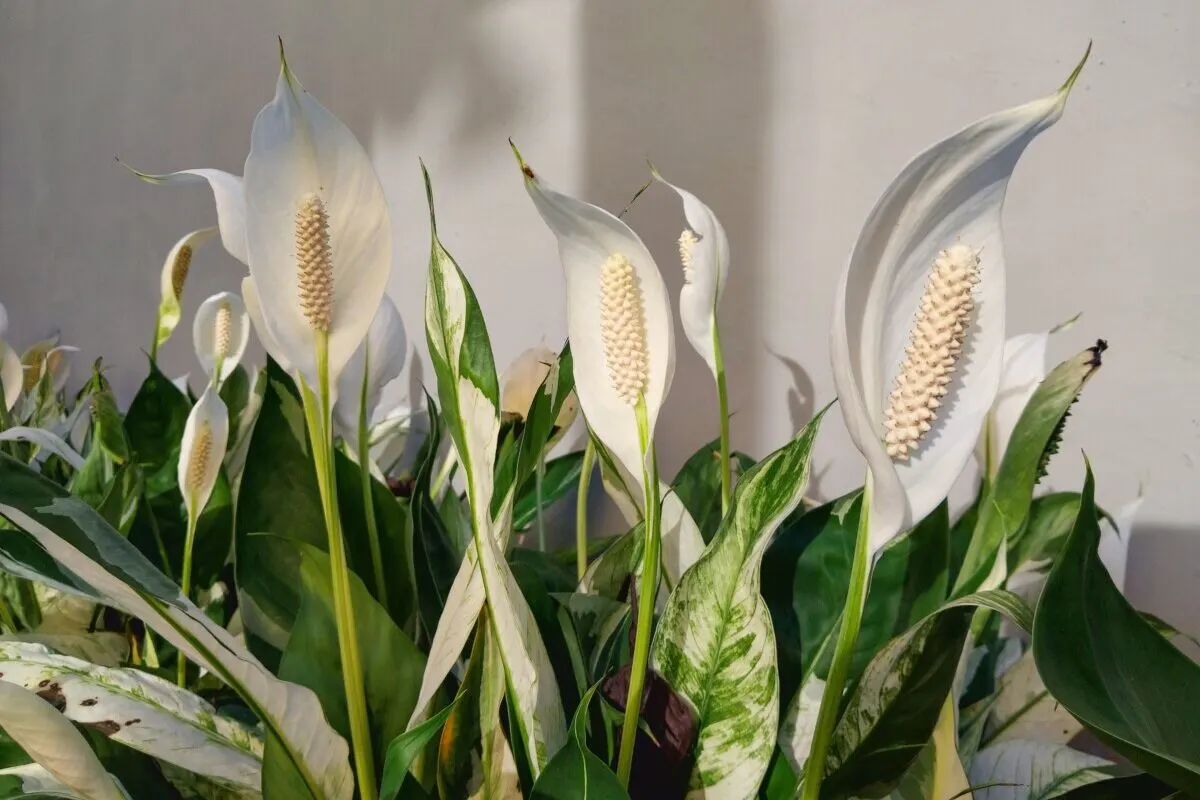
So, breeders continued their search for a true, continuous blooming peace lily, focusing more on the environmental factors. They made several important discoveries.
- All peace lily cultivars will only flower once they have reached maturity, usually between nine and fifteen months. (Unless chemically induced with GA.)
- Some cultivars are seasonal and will only bloom during spring and summer; the development of their blooms occurs the previous fall. No amount of extra light or fertilizer will change this; it is what it is.
- There are a couple of multi-seasonal cultivars that will flower periodically throughout the year, but not continuously. Spathiphyllum x Clevelandii, the most popular and abundant peace lily, appears to be a multi-seasonal cultivar.
- Temperature also plays an important role in bloom development. Peace lilies require a consistent temperature of around 72 degrees F to develop blooms.
- Hybridization had occurred naturally within the species of the cultivars they were studying, leading them to believe that someday there could be an ever-blooming peace lily. But they’re still working on it. (University of Florida Extension)
Asking the Right Question
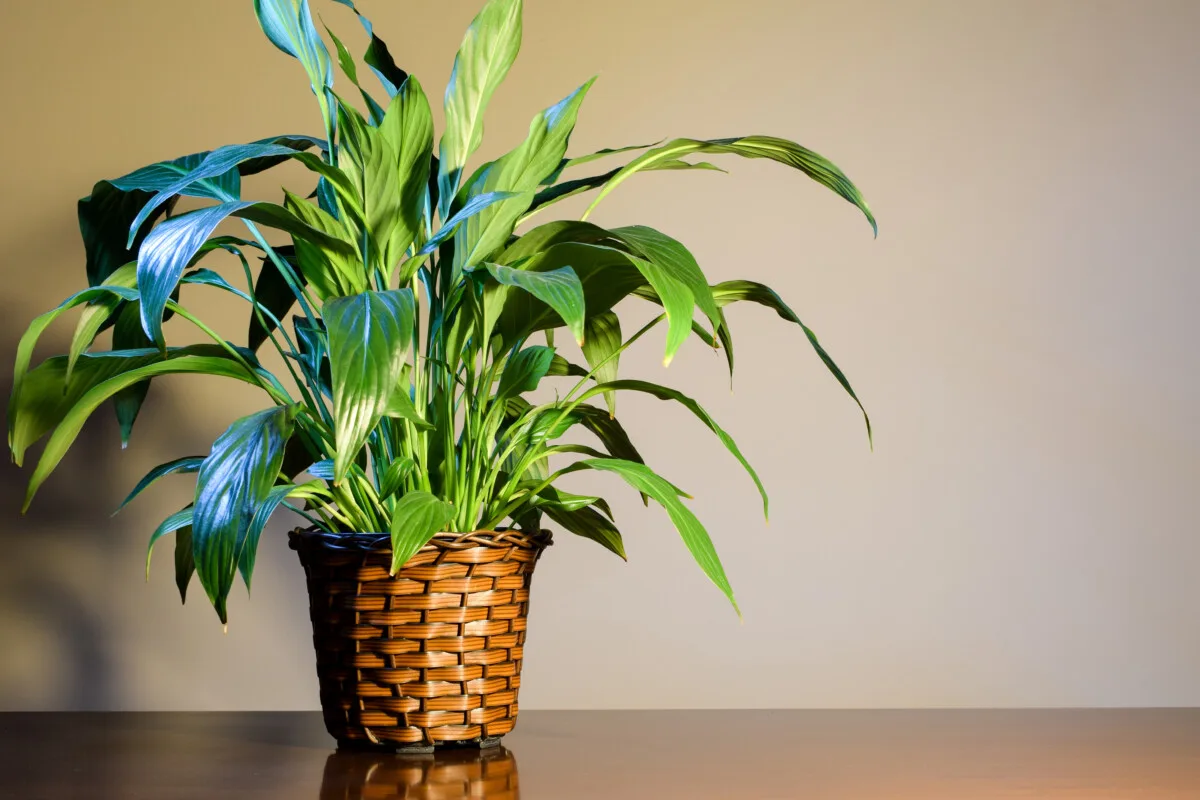
Most people find this article because they asked Google how to get their peace lily to bloom again. However, after reading about the breeding history of these plants, I hope you’re beginning to see that just because you can get a plant to flower, that doesn’t make it a “flowering plant.”
Rather than asking how to get your peace lily to bloom again, perhaps the better question is:
“Is peace lily really meant to be a ‘flowering’ plant?”
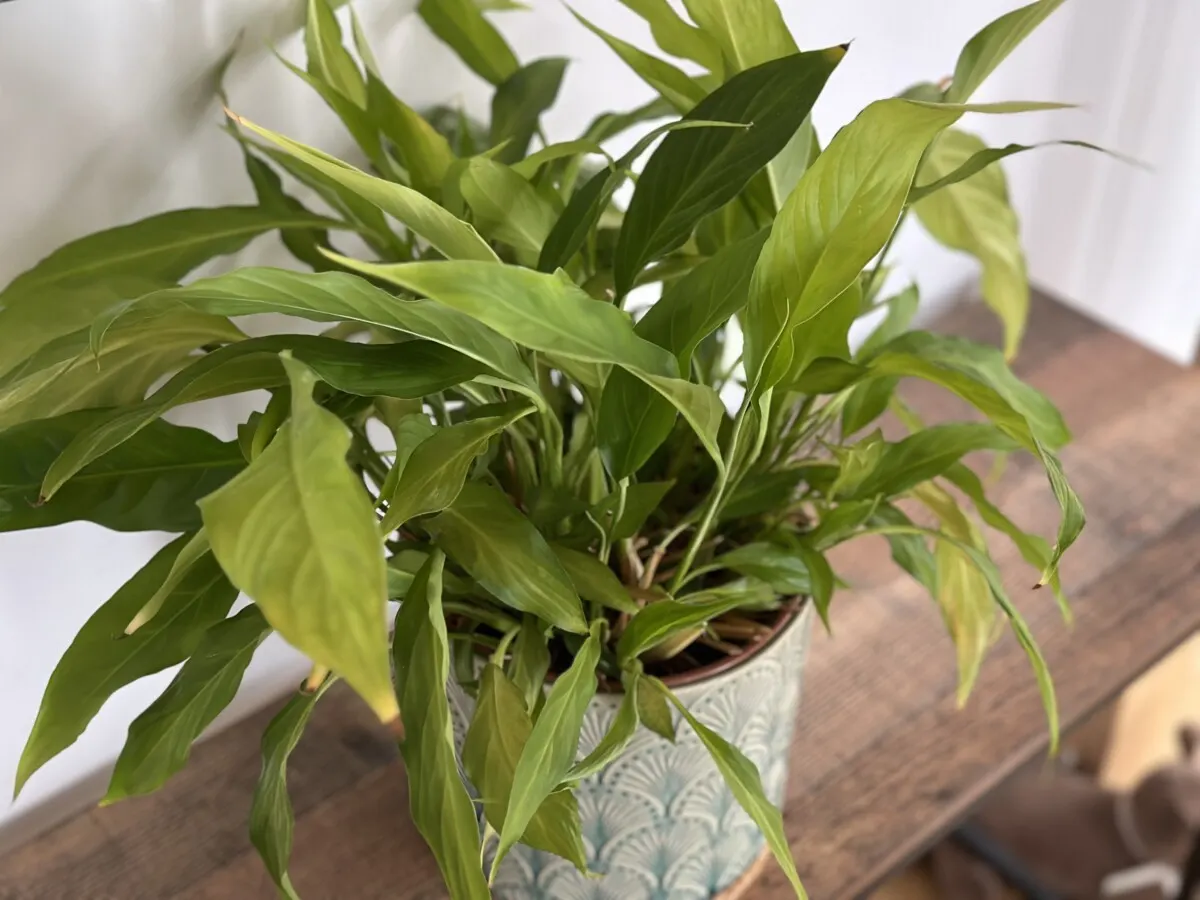
An 18.5-billion-dollar industry certainly worked very hard at convincing us that it is.
Perhaps, we need to manage our expectations and accept that peace lilies are more like their close relatives, Monstera deliciosa.
Did you know Monstera also produces spathe and spadix blooms? (You can even eat the spadix.)
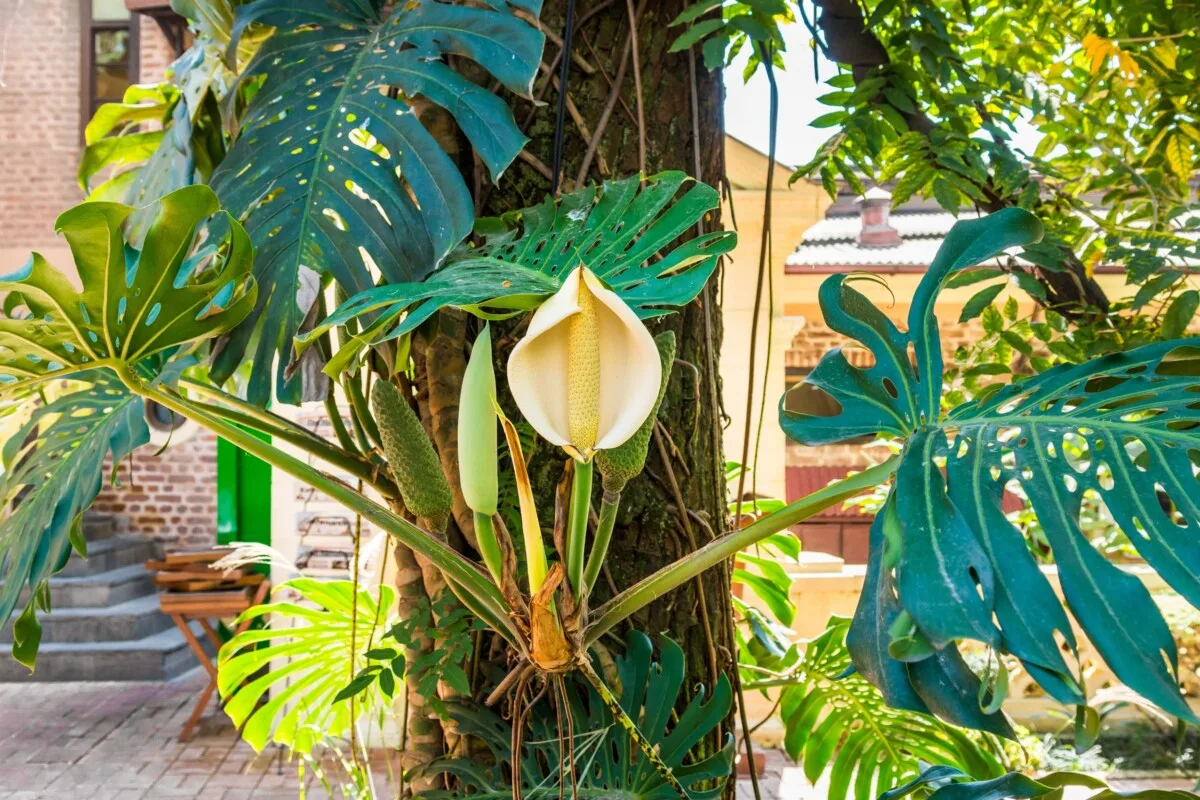
They only develop blooms in specific environmental conditions that are beyond difficult to replicate, nearly impossible indoors. Yet, you rarely see someone in a Reddit thread wondering why they can’t get their monstera to bloom.
Because everyone knows Monstera deliciosa is grown for its foliage.
Hey, wait a minute, weren’t peace lilies initially grown and marketed as foliage plants?
Yup. Then, the plant industry changed their label from foliage to flowering to make more money after discovering they could make the plants bloom with a little spritz of plant hormone. And we all started tearing our hair out, feeling guilty because we couldn’t get their flowering plants to flower again.
Once you consider what breeders have known for ages, it makes more sense that most of the time, you will have a peace lily without blooms rather than with. You need to manage your expectations about what is meant by the description – “flowering plant.”
As long as you provide consistent care and feeding and have a healthy plant, yes, you can get your peace lily to bloom again.
While many articles point to a lack of fertilizer or things like the plant being rootbound as a reason the plant isn’t blooming, these are not often the issue. Rather, the problem usually lies within one of the following three parameters.
Maturity
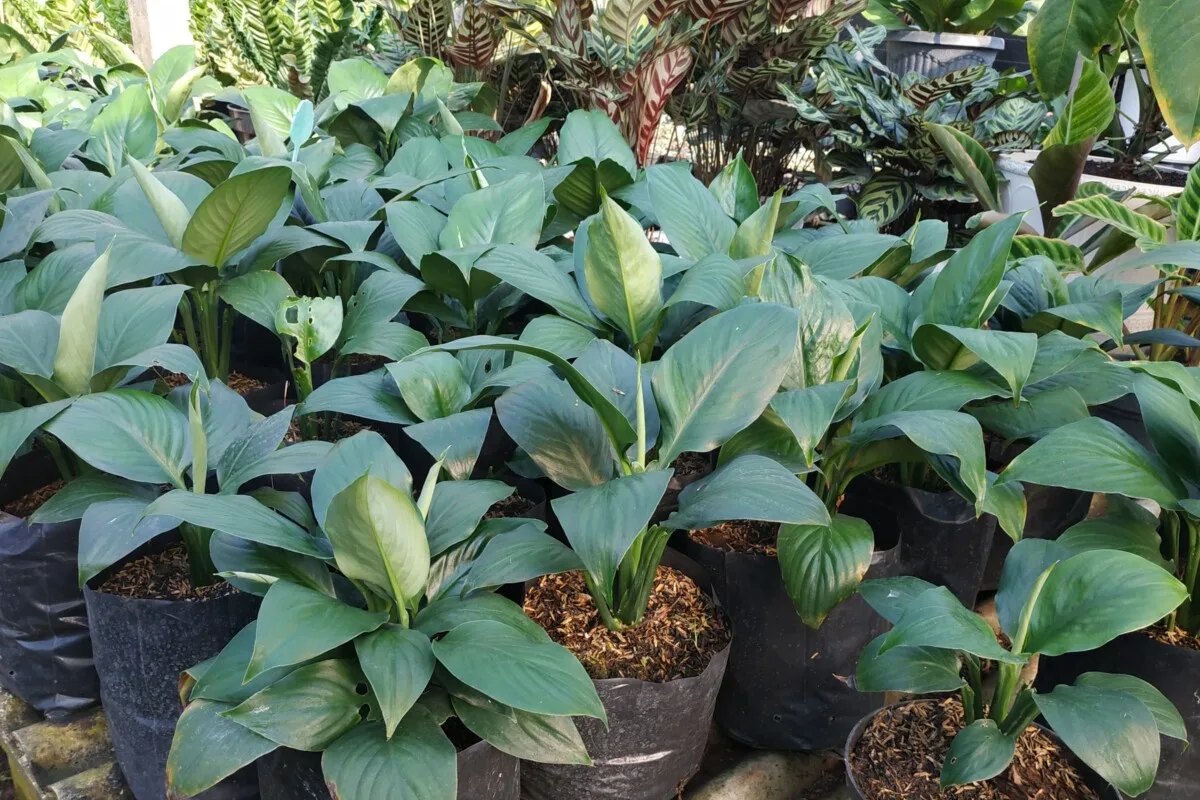
The plant’s, not yours. Peace lilies will not bloom until the plant has reached maturity; this takes anywhere from nine to fifteen months, depending on the cultivar. Conversely, plants that are too old will no longer bloom. Have you had that peace lily for ages? There may be nothing wrong with the plant otherwise, it just may not bloom anymore.
Temperature & Light
These things need to go hand in hand. Peace lilies need consistent temperatures of around 70-75 degrees F to develop blooms. Temperature is easy enough to control indoors; just be sure to keep the plant away from drafty doorways in the cooler months.
They also need a ton of light to make the energy needed to produce blooms.
And by a ton of light, I mean duration and intensity. We already know that direct sunlight is a no-go for peace lilies; instead, they need bright, indirect sunlight. If you want the plant to develop blooms, it needs 10-12 hours of light daily.
That may mean you need to supplement natural light with grow lights. Keep in mind, no matter how bright you think your space is; it’s incredibly dim compared to the greenhouses that got your peace lily to bloom in the first place.
Cultivar Blooming Frequency
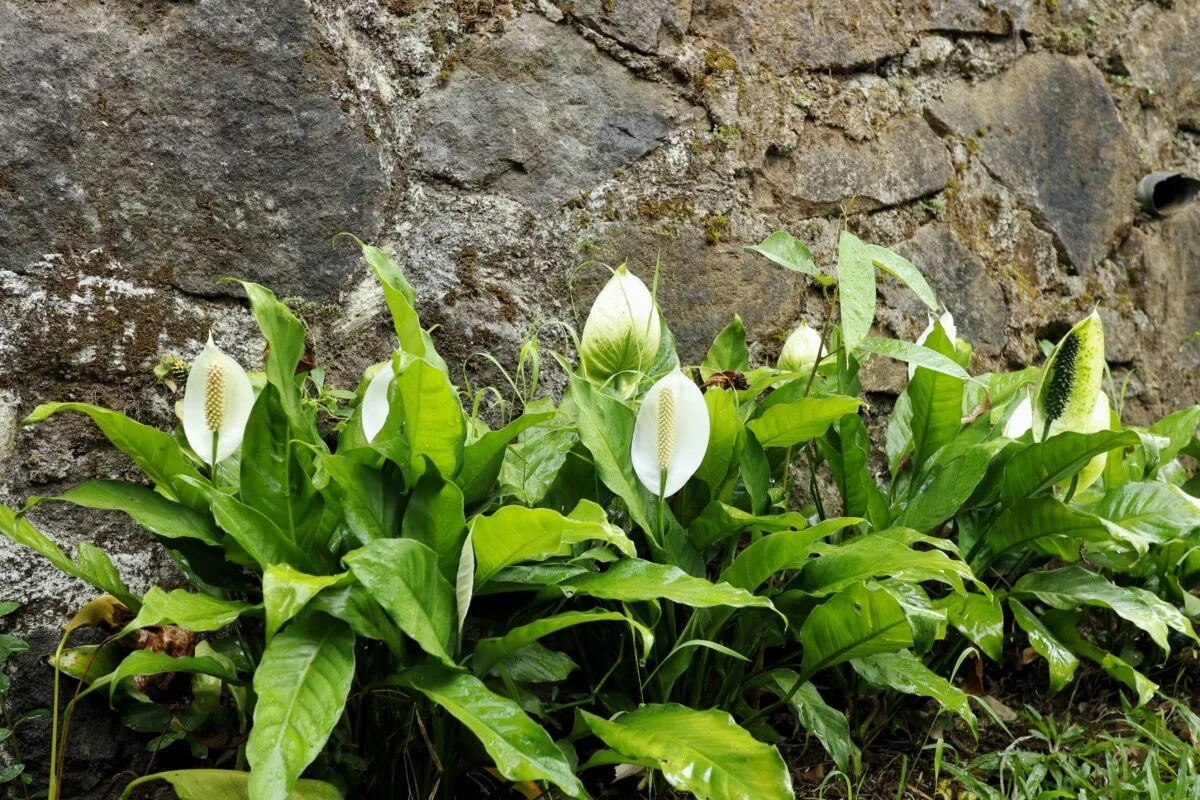
Remember, some cultivars will only bloom once a year, in the spring and summer. Even multi-seasonal varieties will likely only bloom a couple of times a year.
The Most Important Factor in Getting a Peace Lily to Bloom
Patience.
It’s important to remember that it takes peace lilies several months to develop and produce new blooms, anywhere from 70 to 110 days. So even if you have a peace lily cultivar that will produce blooms “continuously,” rarely will you have a plant covered in blooms.
It’s more likely that you will have a flower here and there, now and again. It’s the nature of the beast.
Remember, we’re talking about a foliage plant that’s been forced into the role of a flowering plant. But with a little patience, you can get your peace lily to bloom again.
You may even decide to enjoy it for its beautiful emerald green leaves and be pleasantly surprised when it produces a bloom, naturally, all on its own, without your ministrations.
